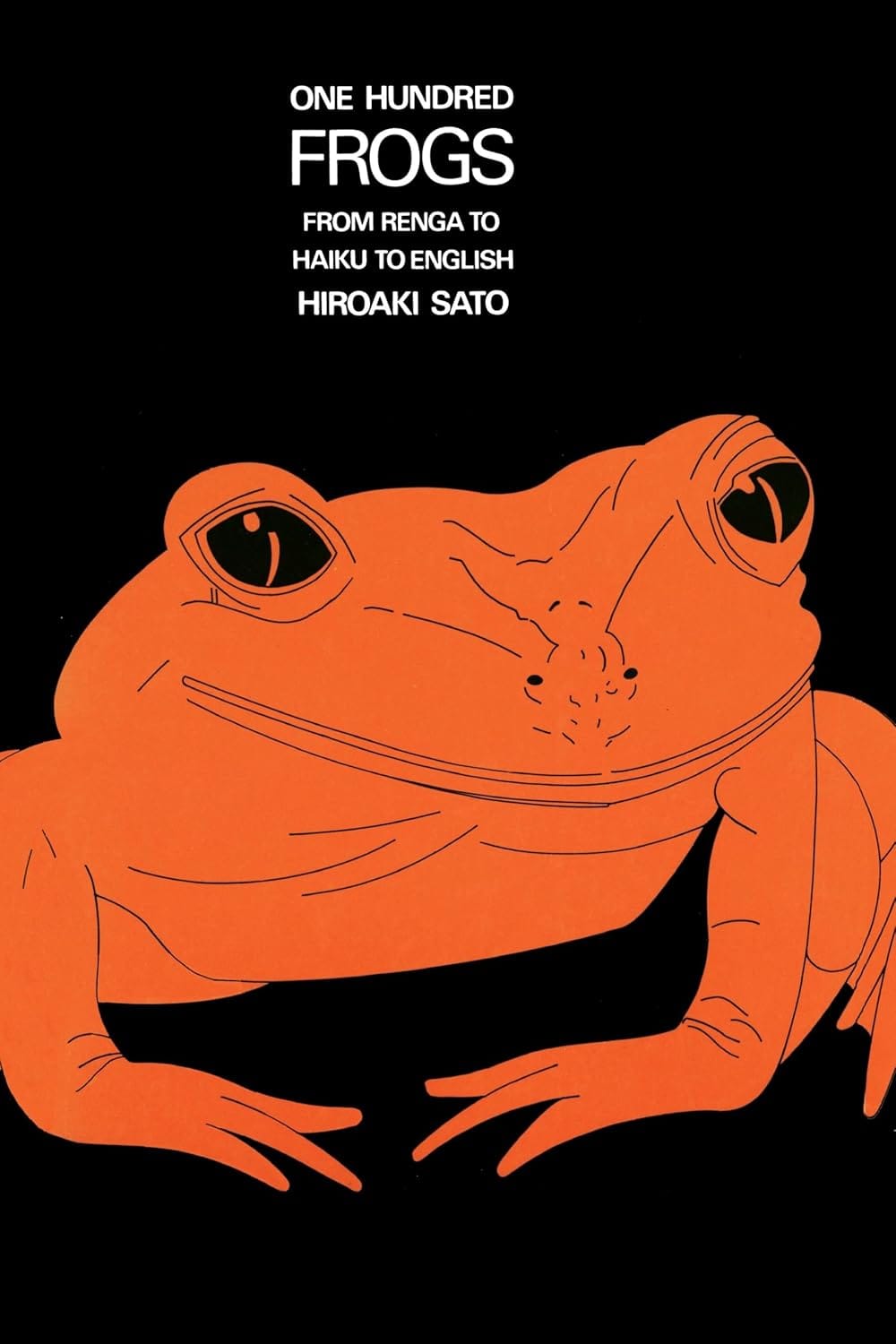Hiroaki Sato's One Hundred Frogs: From Renga to Haiku to English has been the most thought-provoking book that I've read about haiku so far, and I happened to find it at just the right point in my learning journey.
A few months ago, this book — well, the first part of this book (it's really two-books-in-one; see below) — would have been too hard for me to read; it assumes that the reader has some basic knowledge of the history of haiku in Japan and of the major haiku poets, but then it goes on to challenge a lot of the assumptions you might hold if you gained your basic knowledge from the "standard" books you might have read in English. In particular, Sato disputes the importance of Zen in the aesthetics of classical haiku generally, and specifically in the case of Basho. So, if you learned your history of haiku mostly from Blyth (as I did!), then Sato's position comes as a surprise, a disconcerting one in fact. Sato dismisses completely, even a bit contemptuously, the relevance of Zen for understanding Basho's poetry, and focuses instead on Basho as a composer and participant in the renga poetry movement. Although I'm not sure that Zen can be erased from the haiku tradition entirely (Issa is not Basho...), I can now appreciate Basho and his work more fully, and Sato's translations of the renga poem cycles are really amazing. (He is very famous as a translator of Japanese poetry; see Wikipedia for an enormous inventory of his translation work.) For this book Sato both translates a selection of renga poetry into English and also provides detailed verse-by-verse commentary on how the renga work, especially the different kinds of "links" that connect the verses. It's fascinating!
The other half of the book is a collection of translations of and variations on Basho's famous frog-in-the-pond poem. This frog anthology was originally how the book project started, but I think we are very lucky that it then morphed into something much more than that. While most of Basho's English-language translators are not approaching the frog poem with a renga-informed perspective, Sato really wants us to see the poem that way. So by the time I reached the second half of the book with the frog-poem translations into English, I definitely had a much better appreciation of Basho's poem in its place and time.
I should also note that before we even get to these English translations and variations on Basho's frog poem, Sato also provides a mini-anthology of other Japanese haiku about frogs, which is delightful!
So, I cannot say enough good things about this book. Even if you are not ready to plunge into the world of renga poetry, it's worth acquiring this book to see all the different translations of Basho's poem and also to read Sato's observations about haiku in general. Then, when you're ready to take the plunge, I cannot imagine a better introduction to renga in general and specifically to Basho as a composer of renga poetry. It has made me curious to learn more about renga and other genres of Japanese poetry, and I am excited that I will be able to explore some of those genres in Sato's translations.
